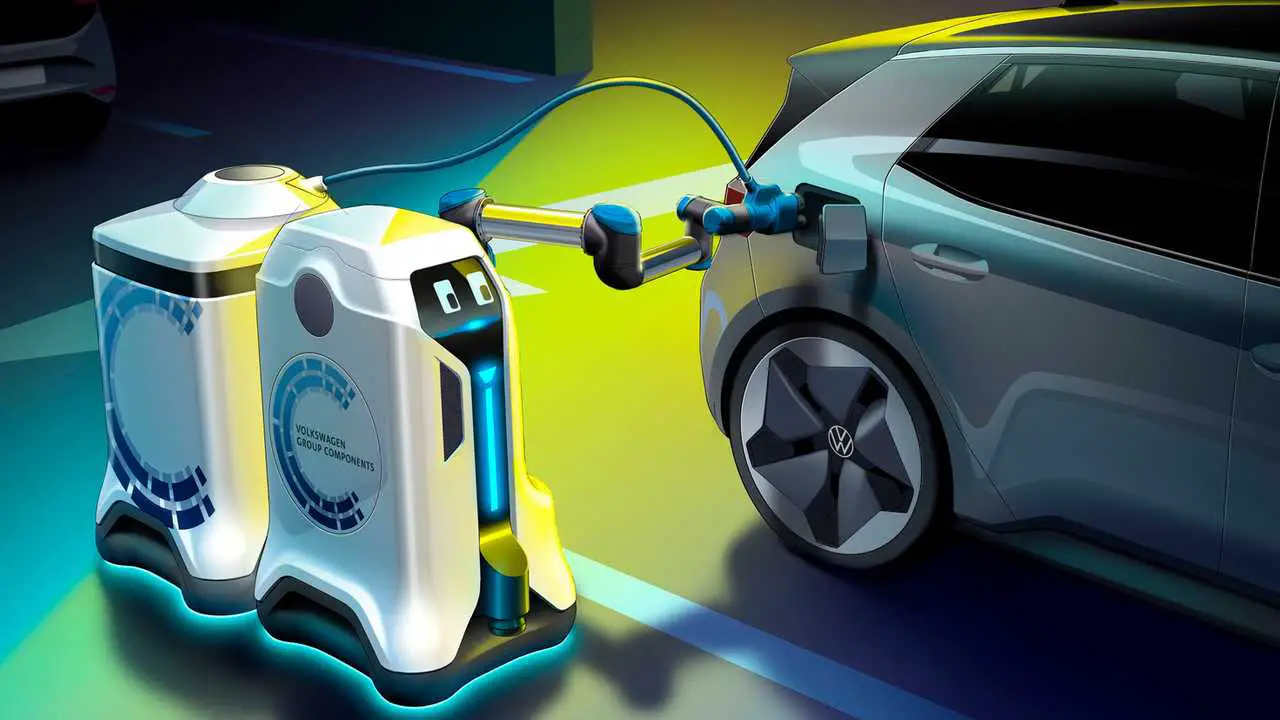Volkswagen to develop an electric car-charging robot
In the future, a parking garage could be able to park your EV and charge it too automatically. VW first developed the concept in 2019. VW has plans for visualizing the idea soon.


In the future, a parking garage could be able to park your EV and charge it too automatically. VW first developed the concept in 2019. VW has plans for visualizing the idea soon. The company liked the idea that the prototype charging robot has a close resemblance to the concept version, complete with blinking digital eyes and R2-D2 noises.
The robot has no official name yet. When you park your electric car in a garage, you or your vehicle can request to have the battery topped up. The robot unmoors from its docking station, hooks up to one of a dozen or so mobile batteries, which it then drags to your car. The robot plugs the shower in your vehicle and then returns to its station, ready to field any other charging requests. When your vehicle has finished setting or returning from your errands, the robot collects the battery and brings it back to the racks stopping to let other cars and pedestrians pass by along the way.
The robot can transport a mobile battery to and from a waiting car and a central charging dock. Communication is through an app or vehicle to infrastructure; once the vehicle receives the signal, it connects the battery via an extending arm. The robot then leaves the battery to recharge, drives off to communicate with another waiting car, and then returns to remove the depleted battery. Multiple sensors help give direction to the robot in the parking garage; this depends on the garage's size; it can use several charging robots simultaneously to give room for more cars to the attended. They need to electrify their parking bays.
The App or the V2X initiates communication; then, the mobile robot drives itself to the vehicle to be charged then finishes the charging process without any interaction. A portable storage device is in charge of supplying the power, which the robot transports to the vehicle like a trailer. The robot fully autonomously opens the fuel filler flap and connects the energy storage device to the car. During this charging process, the mobile energy storage unit remains on the vehicle while the robot recharges other vehicles. When the battery is full, the robot disconnects the car's energy storage device and takes it back to the charging station.
Mark Möller, Head of Development at Volkswagen Group Components, says the mobile charging robot will bring a change in many parking facilities. For example, multi-story car parks, parking spaces, and underground car parks carry the car's charging infrastructure and not vise versa. VW is making most of the car parking to be electric with zero complex individual infrastructural measures.
The design is suitable for use in tight spaces without existing charging infrastructure, such as parking garages. Möller adds that even the well-known problem of a charging station being blocked by another vehicle will no longer live with our concept. You choose any parking space as usual, then leave the rest to the electronic helper.




